Elliott Smith is a legendary songwriter whose work earned him an Academy Award nomination (“Miss Misery,” which was absolutely robbed in 1998 by the hacky “My Heart Will Go On.”) His music and lyrics have also inspired artists from Conor Oberst and Phoebe Bridgers to Frank Ocean and Mac Miller. Smith’s six studio albums are a masterclass in songwriting, spinning despair into sonic gold. We can also say that Elliott Smith does not have a single bad album, ranking these from “Worst to Best” is most like “Least Best to Best Best.” Prepare yourself for a stroll through a somber discography, which, if played loud enough, might prompt those around you to check in, leading you to reassure them ‘it’s okay, it’s alright, nothing’s wrong.”
6. Roman Candle (1994)
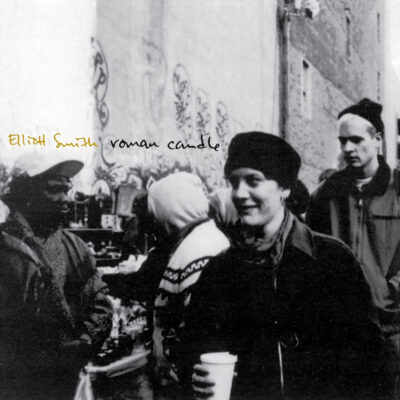 This album represents Elliott Smith’s first foray into solo artistry, a sparse and unembellished introduction to his musical journey. This album, stark and intimate, unfolds like a series of confessions whispered in solitude. With its minimalist approach, Smith strips back the layers to reveal the essence of his songwriting—delicate guitar work paired with his earnest, soft vocals. Each track provides a window into his introspective world, laying the groundwork for the intricate narrative voice defining his later works. While “Roman Candle” shines with raw brilliance in moments, it’s more a hint of the artist’s future potential than a peak. This foundational album is a crucial chapter in understanding Smith’s evolution, showcasing his burgeoning talent yet hinting that his most profound work was still on the horizon.
This album represents Elliott Smith’s first foray into solo artistry, a sparse and unembellished introduction to his musical journey. This album, stark and intimate, unfolds like a series of confessions whispered in solitude. With its minimalist approach, Smith strips back the layers to reveal the essence of his songwriting—delicate guitar work paired with his earnest, soft vocals. Each track provides a window into his introspective world, laying the groundwork for the intricate narrative voice defining his later works. While “Roman Candle” shines with raw brilliance in moments, it’s more a hint of the artist’s future potential than a peak. This foundational album is a crucial chapter in understanding Smith’s evolution, showcasing his burgeoning talent yet hinting that his most profound work was still on the horizon.
Play it Again: “No Name #3,” “Last Call”
Skip it: “Drive All Over Town”
5. XO (1998)
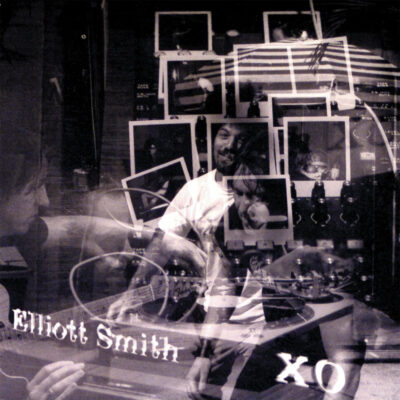 “XO” is Elliott Smith’s ambitious major label debut, a significant turning point in his discography that finds itself at number five. This album is a fusion of his lo-fi beginnings with a more polished and expansive sound, signaling a new chapter in his musical journey. Smith delicately balances his acoustic roots with richer, more complex arrangements, creating an intricate and deeply personal tapestry. “XO” showcases his ability to evolve without losing the core of his introspective essence, offering a collection of textured and layered songs, yet unmistakably Elliott. Despite its standout moments and broader soundscapes, “XO” doesn’t consistently reach the peaks of his later work, positioning it as a pivotal but not the definitive chapter in Smith’s evolution. It hints at his potential to compose well-produced rock songs, laying the groundwork for his upcoming albums.
“XO” is Elliott Smith’s ambitious major label debut, a significant turning point in his discography that finds itself at number five. This album is a fusion of his lo-fi beginnings with a more polished and expansive sound, signaling a new chapter in his musical journey. Smith delicately balances his acoustic roots with richer, more complex arrangements, creating an intricate and deeply personal tapestry. “XO” showcases his ability to evolve without losing the core of his introspective essence, offering a collection of textured and layered songs, yet unmistakably Elliott. Despite its standout moments and broader soundscapes, “XO” doesn’t consistently reach the peaks of his later work, positioning it as a pivotal but not the definitive chapter in Smith’s evolution. It hints at his potential to compose well-produced rock songs, laying the groundwork for his upcoming albums.
Play it Again: “Baby Britain,” “Waltz #2 (XO)”
Skip it: “A Question Mark”
Honorable Mention: New Moon (2007)
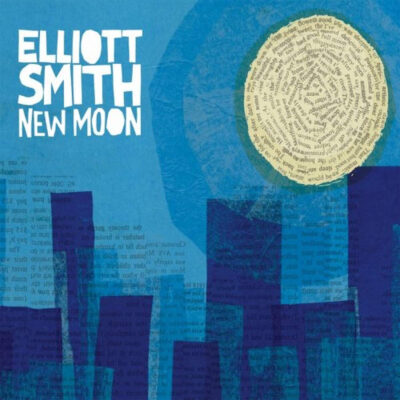 “New Moon” delves into Elliott Smith’s vault, presenting a treasure trove of unreleased tracks and B-sides that offer a unique glimpse into his artistic journey. This collection, not officially part of his main studio catalog, serves as a deep dive into the raw, unpolished undercurrents of Smith’s songwriting. It’s akin to discovering a hidden drawer of sketches, each resonating with the authentic essence of his creative process. These tracks, spanning from 1994 to 1997, provide a poignant look at Smith’s evolving artistry, capturing moments of vulnerability and emotion. “New Moon” is a testament to Smith’s enduring talent, showcasing a side of him that’s both delicate and rugged and shows the intimate acoustic charm that defined his early work.
“New Moon” delves into Elliott Smith’s vault, presenting a treasure trove of unreleased tracks and B-sides that offer a unique glimpse into his artistic journey. This collection, not officially part of his main studio catalog, serves as a deep dive into the raw, unpolished undercurrents of Smith’s songwriting. It’s akin to discovering a hidden drawer of sketches, each resonating with the authentic essence of his creative process. These tracks, spanning from 1994 to 1997, provide a poignant look at Smith’s evolving artistry, capturing moments of vulnerability and emotion. “New Moon” is a testament to Smith’s enduring talent, showcasing a side of him that’s both delicate and rugged and shows the intimate acoustic charm that defined his early work.
Play it Again: “Whatever (Folk Song in C),” “New Monkey”
Skip it: “Seen How Things Are Hard”
4. Figure 8 (2000)
 This album marks Elliott Smith’s evolution into a realm where his intimate acoustic origins meet a more ambitious, rockstar-like polish. His second major label release is praised by fans and critics for its rich tapestry of sound—melding diverse instrumentation with intricate arrangements. It signifies Smith’s transition, merging the heartfelt storytelling of his past with a grander, more intricate musical canvas. “Figure 8” captures Smith at a point where his artistry burgeoned into something more expansive while maintaining the emotional core that is quintessentially his. Despite its broader scope and Smith’s venture into ‘rockstar’ territory while retaining his distinctive songwriting charm, the album doesn’t quite reach the pinnacle of his discography. It’s a significant chapter in Smith’s musical journey, showcasing an unmistakable evolution and a step towards a more elaborate sonic landscape. Also, I always laugh at the thought of thousands of people accidentally listening to “Somebody That I Used to Know” from this album while trying to listen to Goyte’s smash-hit of the same name.
This album marks Elliott Smith’s evolution into a realm where his intimate acoustic origins meet a more ambitious, rockstar-like polish. His second major label release is praised by fans and critics for its rich tapestry of sound—melding diverse instrumentation with intricate arrangements. It signifies Smith’s transition, merging the heartfelt storytelling of his past with a grander, more intricate musical canvas. “Figure 8” captures Smith at a point where his artistry burgeoned into something more expansive while maintaining the emotional core that is quintessentially his. Despite its broader scope and Smith’s venture into ‘rockstar’ territory while retaining his distinctive songwriting charm, the album doesn’t quite reach the pinnacle of his discography. It’s a significant chapter in Smith’s musical journey, showcasing an unmistakable evolution and a step towards a more elaborate sonic landscape. Also, I always laugh at the thought of thousands of people accidentally listening to “Somebody That I Used to Know” from this album while trying to listen to Goyte’s smash-hit of the same name.
Play it Again: “Junk Bond Trader,” “Son of Sam”
Skip it: “Bye”
3. From a Basement on the Hill (2004)
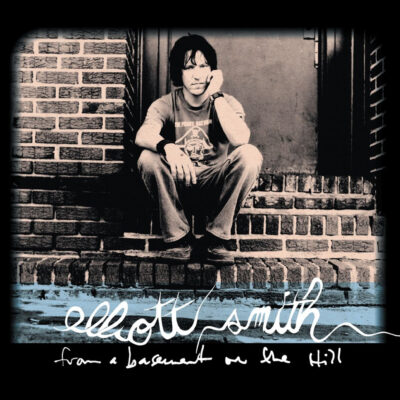 “From a Basement on the Hill” stands as Elliott Smith’s poignant posthumous release, a window into the uncharted territory he was beginning to explore. This album merges the raw emotional intensity of his earlier works with a daring, experimental edge, marking a shift to an even more bitter and cynical vibe. It’s an album that vibrates with urgency and innovation, capturing Smith at a potential turning point in his artistry. Each track resonates with a sense of what could have been as Smith delves into a blend of familiar sounds and new, experimental directions. “From a Basement on the Hill” is not just a collection of songs; it’s a bittersweet testament to Smith’s evolving genius, offering a tantalizing glimpse of a future tragically left unrealized. While it showcases his talent in raw, unfiltered glory, it also leaves us pondering the masterpieces that might have followed, positioning this album as an essential, yet hauntingly incomplete, chapter in his legacy.
“From a Basement on the Hill” stands as Elliott Smith’s poignant posthumous release, a window into the uncharted territory he was beginning to explore. This album merges the raw emotional intensity of his earlier works with a daring, experimental edge, marking a shift to an even more bitter and cynical vibe. It’s an album that vibrates with urgency and innovation, capturing Smith at a potential turning point in his artistry. Each track resonates with a sense of what could have been as Smith delves into a blend of familiar sounds and new, experimental directions. “From a Basement on the Hill” is not just a collection of songs; it’s a bittersweet testament to Smith’s evolving genius, offering a tantalizing glimpse of a future tragically left unrealized. While it showcases his talent in raw, unfiltered glory, it also leaves us pondering the masterpieces that might have followed, positioning this album as an essential, yet hauntingly incomplete, chapter in his legacy.
Play it Again: “Kings Crossing,” “A Fond Farewell”
Skip it: “Ostrich and Chirping” (unless you’re curious about the title’s literal sounds).
2. Self-Titled (1995)
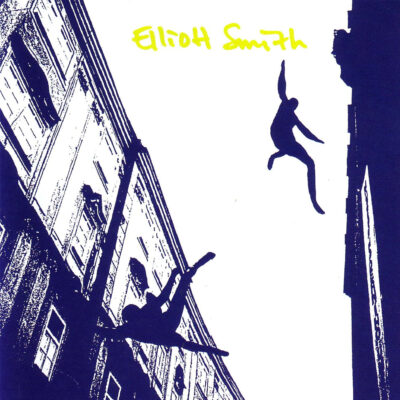 The runner-up spot is deservedly claimed by “Elliott Smith,” an album that not only cements his status as an acoustic singer-songwriter par excellence but also distills the essence of his artistry. This eponymous release serves as a profound exploration of Smith’s ability to weave deeply personal narratives with nothing more than his voice and a guitar. Each track showcases his songwriting at its most raw and pure, with gentle strums and passionate vocals that connect directly to the listener’s soul. The album’s intimate, unvarnished honesty offers a quintessential Elliott Smith experience, presenting a collection of songs that are as hauntingly beautiful as they are starkly honest. It is a seminal work in his catalog, a must-listen for long-time fans and newcomers, encapsulating the raw emotional depth and minimalistic beauty that define his legacy.
The runner-up spot is deservedly claimed by “Elliott Smith,” an album that not only cements his status as an acoustic singer-songwriter par excellence but also distills the essence of his artistry. This eponymous release serves as a profound exploration of Smith’s ability to weave deeply personal narratives with nothing more than his voice and a guitar. Each track showcases his songwriting at its most raw and pure, with gentle strums and passionate vocals that connect directly to the listener’s soul. The album’s intimate, unvarnished honesty offers a quintessential Elliott Smith experience, presenting a collection of songs that are as hauntingly beautiful as they are starkly honest. It is a seminal work in his catalog, a must-listen for long-time fans and newcomers, encapsulating the raw emotional depth and minimalistic beauty that define his legacy.
Play it Again: “The Biggest Lie,” “The White Lady Loves You More”
Skip it: None.
1. Either/Or (1997)
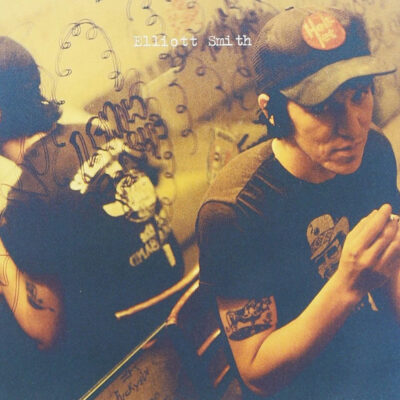 Elliott Smith’s magnum opus, a testament to his profound artistry and emotional depth. This seminal album gained mainstream attention with its inclusion in the “Good Will Hunting” soundtrack, which not only brought Smith’s music to a broader audience but also immortalized tracks like “Between the Bars” and “Say Yes” in cinematic history. “Either/Or” is Smith’s most accessible yet deeply poignant work, blending his signature intricate guitar play with reflective lyrics to craft songs that resonate with a haunting beauty. The album’s raw, expressive power and impeccable songwriting highlight Smith’s genius at its peak, offering tracks demonstrating his unparalleled ability to weave intricate emotional narratives with simple, evocative acoustic arrangements. “Either/Or” is not just an album; it’s a masterclass in storytelling, a beacon in the indie folk genre, and the quintessential representation of Smith’s enduring legacy.
Elliott Smith’s magnum opus, a testament to his profound artistry and emotional depth. This seminal album gained mainstream attention with its inclusion in the “Good Will Hunting” soundtrack, which not only brought Smith’s music to a broader audience but also immortalized tracks like “Between the Bars” and “Say Yes” in cinematic history. “Either/Or” is Smith’s most accessible yet deeply poignant work, blending his signature intricate guitar play with reflective lyrics to craft songs that resonate with a haunting beauty. The album’s raw, expressive power and impeccable songwriting highlight Smith’s genius at its peak, offering tracks demonstrating his unparalleled ability to weave intricate emotional narratives with simple, evocative acoustic arrangements. “Either/Or” is not just an album; it’s a masterclass in storytelling, a beacon in the indie folk genre, and the quintessential representation of Smith’s enduring legacy.
Play it Again: “Ballad of Big Nothing,” “Rose Parade”
Skip it: None

